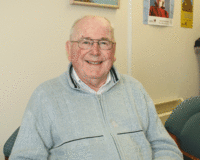Features
Msgr John Broadbent
6 November 2012
 The papacy, barely returned to Rome in 1377, would soon split off into two papacies and then three, before being resolved.
The papacy, barely returned to Rome in 1377, would soon split off into two papacies and then three, before being resolved.
Last month, we saw how St Catherine of Siena managed to persuade Pope Gregory XI to leave Avignon and return to Rome. He lived for only a year after his arrival.
Mob rule
Public pressure then forced the election of an Italian pope to succeed the French Gregory.
Bartolomeo Prignano, Archbishop of Bari and previously a papal officer in Avignon, thus became Urban VI in 1378. However, although Urban had, until his election, shown a placid temperament, he turns out to have really been a irascible character. He alienated many of his French electors by threatening to create more Italian than French cardinals and often had fits of rage when crossed.
Robert of Geneva, leader of the French cardinals and a cousin of the French king, called the cardinals together who then elected him pope as Clement VII. With his cardinals, he retreated to Avignon.
In Avignon the pope was supported by France, Burgundy, Savoy, Naples and Scotland. Rome had the backing of many Italian states, England, Germany, Scandinavia, Portugal, Hungary and Poland. Spain remained neutral.
‘The Annuario Pontificio – the annual Church bulletin – favoured the Italian as the only official line; Avignon was now the home of anti-popes.
Increasingly, nepotism and simony marked papal elections. When Clement VII died in 1394, Benedict XIII (born Pedro Martínez de Luna y Pérez de Gotor) succeeded him in Avignon.
There were two more popes in Rome after Urban VI – Boniface IX in 1389 and Innocent VII in 1404 – with Gregory XII in 1406 being a stop-gap in case Benedict XIII renounced his claim. In the event, Gregory remained pope until 1415.
Action is required
When the Church saw that neither Gregory nor Benedict were going to do anything about unity, disaffected cardinals from both sides met at Pisa in 1409 to elect a third pope, Alexander V. He died within a year, to be succeeded by (antipope) Pope John XXIII.
Fortunately, the emperor, Sigismund, intervened and the full church met at the Council of Constance in 1415. The three popes were deposed, and a new pope – Martin V – was elected in 1417. He signed a document declaring the council to have been legitimately assembled by the Holy Spirit with authority directly from Christ requiring obedience from all Christians – including the pope. Popes hindering church unity could be deposed by the council. Succession was through Rome, with Gregory XII, who had died in 1417, the last legitimate pope before Martin.
The status of the papacy certainly suffered because of what had gone on. While the popes who succeeded were first of all good men who restored many churches, started the Vatican Library, and allowed General Councils to meet, simony and nepotism were already taking hold on the cardinals, if not at every election then lurking in the background.
 Enter the Borgias
Enter the Borgias
The first Spanish pope, Callixtus III, was elected in 1455 (died 1458). The former Alfons de Borja was the uncle of the infamous Alexander VI, born Roderic Llançol i de Borja, who became pope in 1492. Their surname would be Italianised to Borgia.
Alexander’s pontificate was marked by nepotism, greed and unbridled sensuality. His uncle named him cardinal deacon at age 25 and his control of papal finances made him the second richest cardinal.
He lived an openly promiscuous life, fathering several children. It is said that at his election only five of the 22 cardinals could not be bought.
In June 1497 when his favourite son, Juan, was murdered (possibly by his brother Caesar), he tried to reform. However, he could not, so tight had he woven the web around his life. He died of poison.
Between Callixtus and Alexander were four Italian popes, including Pius II (1458–1464). Pius issued a bull, Execrabilis, in 1460 which almost ignored the Council of Constance, forbidding the submitting of papal acts to any future council on appeal.
The popes following Alexander included Julius II (1503 – 1513) who led troops into battle but was also a patron of artists such as Michelangelo and Raphael and Bramante. Julius commissioned Bramante to prepare plans for the new St Peter’s, laying the cornerstone himself.
His successor, the Florentine Giovanni di Lorenzo de’ Medici, son of Lorenzo the Magnificent, was pope from 1513 to 1521.
The last non-priest to become pope, he also excommunicated Martin Luther, which brings us to the beginning of the Reformation.
Image: Alexander’s pontificate was marked by nepotism, greed and unbridled sensuality. Portrait in the Corridoio Vasariano, Florence. From en.wikipedia.org/wiki/File:Pope_Alexander_Vi.jpg